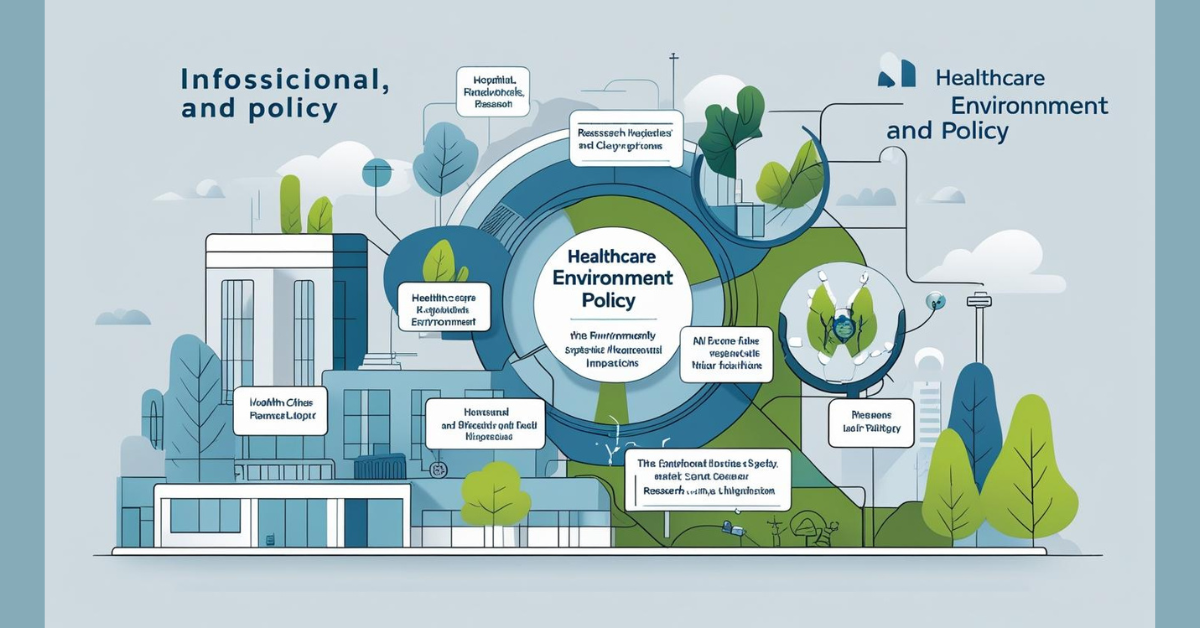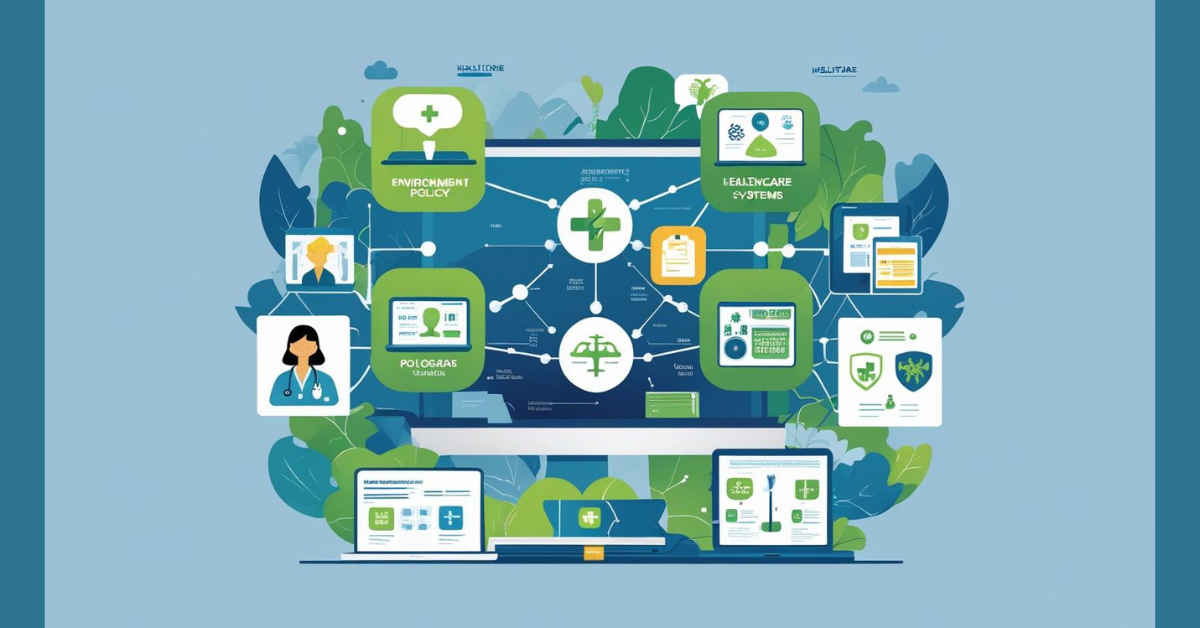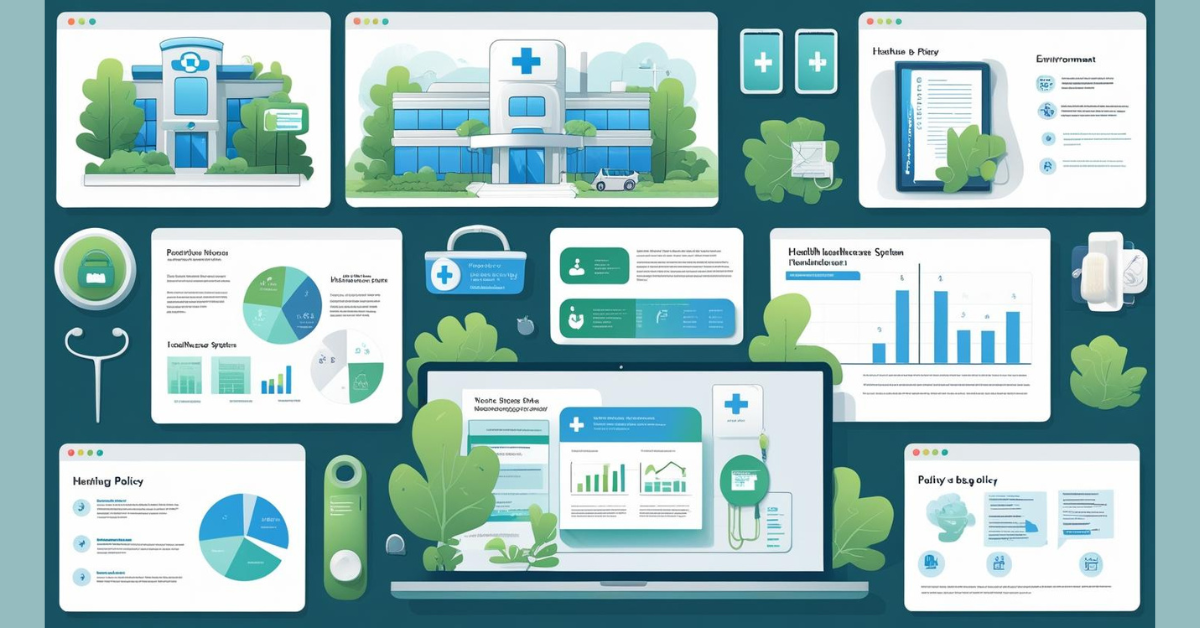What is Health Care Environment and Policy and Systems Within Health Care Environment. Healthy environments are those in which all people enjoy good air quality and access to sufficient drinking water, safe sanitation, and waste disposal. This, in turn, reduces the risk of exposure to pathogens and chemicals.
The Health Care Environment and Policy and Systems Within Health Care Environment
The “healthcare environment” encompasses the systems and policies that support health, maintain well-being, and treat disease. It includes the physical space where health services are delivered, as well as the broader environmental, social, and political factors that influence health outcomes. Policies and systems within this environment aim to promote health, prevent disease, and ensure high-quality care.
The healthcare environment can be defined as an environment that promotes healing. A safe and therapeutic environment should be a priority in patient care. The environment is defined by the patient’s location. A health system encompasses all institutions, organizations, and resources dedicated to promoting, maintaining, or restoring health through the provision of services using human, financial, and material resources.
Health-Care Environment and Policy
In the United States, the health-care environment is an extensive, rapidly changing, all-encompassing arena. This arena includes personal living spaces, providers’ offices and clinics, hospitals, extended or skilled nursing care facilities, nursing homes and hospices, numerous service organizations related to health, private and public health systems, and a plethora of other locations and entities providing support and services. Service providers commonly include the pharmaceutical industry, laboratory or radiological services, and, more recently, information technology services.
Essentially, health care within the system can transpire at any time or in any location where health-care providers, or their surrogates, interact with persons needing or seeking health care or where their personal health information is accessed. The status of the health-care system in the United States has changed significantly since 2010 with the passage of the Patient Protection and Affordable Care Act, commonly referred to as the Affordable Care Act (ACA).
The number of uninsured is expected to decrease over time; however, access to health care, complicated by a lack of providers and services, is of concern to all health-care providers. The cost of health care and the quality of care provided continue to be of paramount importance to nurse leaders and managers who are faced with the consequences of the rising costs of health care, decreasing reimbursement for health-care services, and limited resources. Many believe that the ACA will transform the health-care system in the United States and provide safer, higher-quality, more affordable, and more accessible care (Institute of Medicine [IOM], 2011).
Strong nursing leadership is necessary to make this vision a reality. Nurses are called to be leaders “from the bedside to the board room” (IOM, 2011, p. 7). Equally important is that all nurses, students, bedside and community nurses, chief nursing officers, members of nursing organizations, and nursing researchers must develop leadership competencies, especially those related to health policy (IOM, 2011). Nurse leaders and managers determine policies, procedures, and resources for their staff members and facilities to provide safe and quality care and ensure evidence-based interventions to assist in the control of costs and in improved patient outcomes.
Nurse leaders and managers must advocate for society by serving as experts in promoting and implementing health policies. Further, nurses are experts in health and should be at the table where and when policies are developed that affect the populations with which they interact. This post discusses the current status of health care in the United States, the ACA, Medicare and Medicaid, health policy, and the role nurse leaders and managers play in these issues. Knowledge, skills, and attitudes related to the following core competencies are included in this post : patient-centered care; teamwork and collaboration; and evidence-based practice.
Systems Within The Health Care Environment
Health care in most cases can be broken down into private and public health-care sectors. Private health-care sectors include companies, for profit and nonprofit, not associated directly with government agencies, whereas public health-care sectors are often funded by tax dollars. Private health care is monetarily compensated health care that is provided to individuals seeking care within the health-care environment.
The payment for private health care is usually predetermined and sometimes negotiated with health-care providers. The cost of services can be paid directly to the provider by a monetary payment or rendered through government or commercial (private) health insurers, also known as third-party payers. Private health care is the predominant form of health care for persons residing in the United States.
Reporting for the U.S. Department of Commerce, United States Census Bureau, Smith and Medalia (2014) estimated that 64.2% of individuals were covered by private health insurance in 2013, of which 53.9% employment was based (provided through an employer). The total percentage of people with health insurance was estimated at 86.6% in 2013.
The U.S. private health-care system is often referred to as “the greatest health care system in the world” but yet is ranked 37th in the world (Murray & Frank, 2010). Life expectancy is often considered a measure of the adequacy of a health care system’s influence on its population. According to the World Health Organization (WHO, 2014), combined life expectancy in the United States is 79 years for both males and females (76 for males and 81 for females); however, it does not rank within the 10 top-ranked countries for life expectancy in either male or female categories (WHO, 2014).
Public health care, according to the Centers for Disease Control and Prevention (CDC) Foundation, “is the science of protecting and improving the health of families and communities through promotion of healthy lifestyles, research for disease and injury prevention and detection and control of infectious diseases” (CDC Foun dation, 2016, para. 1).
All states have public health departments that support this role and must report to U.S. government health agencies such as the CDC, which is a division of the U.S. Department of Health and Human Services. In certain states and communities, public health departments often provide primary care to indigent populations and underserved populations. Vaccination service and sexually transmitted disease clinics are frequently operated by state and county health departments. These services usually offer reduced payment options or free care for qualified individuals.
The Commissioned Corps of the U.S. Public Health Service, also a branch of the Department of Health and Human Services, is a commissioned corps of health-care providers, including nurses, similar to the military with regard to rank and retirement. Members of this corps work in a number of health-care are nas, including the CDC, National Institutes of Health, Indian Health Service, Food and Drug Administration, Agency for Healthcare Research and Quality (AHRQ), and many more.
Government health care in the United States is not provided directly by the government in most cases. The term actually refers to government-provided health insurance, such as Medicare and Medicaid, which is actually provided by the private health-care system. The Veterans Health Administration and military hospitals and clinics are directly funded by tax dollars and provide care directly to active duty military personnel and former service members of the armed services (Army, Navy, Marine Corps, Air Force, and Coast Guard).
These are actual representations of government-provided health care within the Department of Veterans Affairs (VA) and Department of Defense (DOD) system. Both agencies maintain numerous outpatient facilities and hospitals. The VA is primarily staffed by civilians, whereas the DOD has a considerable number of active duty personnel staffing military clinics and hospitals.
In the United States, charity care or reduced-cost care exists for persons who do not have adequate access to the private, public, or government health-care systems as a result of life circumstances (e.g., financial, geographic, lack of transportation). However, this care is very limited in scope and location.
National or universal health care refers to health care provided to citizens through the government, usually without the involvement of private health insurers. Currently, Australia, Canada and the United Kingdom (England, Scotland, Wales, and Northern Ireland), and many other European countries provide this type of health care to their citizens. Although there are many advocates for the implementation of a national or universal health-care system in the United States, politically and culturally it is not likely to occur in the near future.
Conclusion
The modern healthcare landscape is fundamentally shaped by the intricate relationship between the Health Care Environment and Policy and Systems Within Health Care Environment, which serves as the foundational framework for all medical service delivery. Administrative decisions, regulatory frameworks, and institutional protocols all emerge from this complex interplay of the Health Care Environment and Policy and Systems Within Health Care Environment, determining how resources are allocated, how patient care is prioritized, and how quality standards are maintained across different healthcare settings.
Healthcare professionals must navigate the challenges presented by the Health Care Environment and Policy and Systems Within Health Care Environment while adapting to evolving technologies, changing demographics, and shifting policy mandates that directly impact patient outcomes. The effectiveness of any healthcare intervention ultimately depends on understanding and optimizing the Health Care Environment and Policy and Systems Within Health Care Environment, as this comprehensive framework determines the success or failure of healthcare delivery models.
In conclusion, the seamless integration and continuous improvement of healthcare policies, environmental factors, and systematic approaches within healthcare settings remains critical for achieving sustainable, equitable, and high-quality healthcare outcomes for all populations served.
Read More:
https://nurseseducator.com/didactic-and-dialectic-teaching-rationale-for-team-based-learning/
https://nurseseducator.com/high-fidelity-simulation-use-in-nursing-education/
First NCLEX Exam Center In Pakistan From Lahore (Mall of Lahore) to the Global Nursing
Categories of Journals: W, X, Y and Z Category Journal In Nursing Education
AI in Healthcare Content Creation: A Double-Edged Sword and Scary
Social Links:
https://www.facebook.com/nurseseducator/
https://www.instagram.com/nurseseducator/
https://www.pinterest.com/NursesEducator/
https://www.linkedin.com/in/nurseseducator/
https://www.researchgate.net/profile/Afza-Lal-Din
https://scholar.google.com/citations?hl=en&user=F0XY9vQAAAAJ


